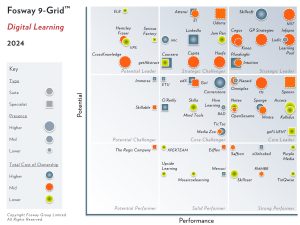Over two years on, early 2020 with its national lockdowns, toilet roll shortages and furlough schemes, seems almost like a distant memory…
Yet the pandemic has had an undeniable impact on almost every aspect of society. This is especially true of the current and still turbulent labour market. Coming up with a sustainable solution to the challenges we face won’t be simple, but could the glaring gap within adult engagement in learning offer part of the solution?
A closer look at the challenge
Britain’s post-pandemic road to employment recovery has been entirely different than expected. In mid-2020, now Prime Minister Rishi Sunak outlined his £2.9 billion ‘Plan for Jobs’ and Restart employability programme, targeted at the long-term unemployed. Yet by its launch in 2021, the scheme was rendered almost redundant by the changing state of the economy and unpredictable labour market. We expected mass unemployment as furlough wound down, yet this never materialised.
Whilst this left Restart and its services scrambling to meet referral quantities and outcomes, this doesn’t mean that recovery is or was smooth sailing… quite the opposite. The labour market ‘recovery’ has merely unearthed an entirely new challenge: that despite record hiring, vacancies are also at a near record high, with employers struggling to fill roles and meet their needs. At the same time, we are faced with a growing ‘working power’ and a large rise in the economically inactive, especially amongst the older population. Faced with these challenges, we need a solution to engage, retain and motivate individuals throughout their career, supporting both their personal development and labour market needs. Individuals must be armed with the right skills and active participation learning is the key to their acquisition.
Mind the gap
But first, let’s understand the journey. Where we are now? Where have we been? And where do we need to get to? Recently, the Learning and Work Institute launched their 2022 ‘Adult Participation in Learning Survey’. Comprising of a representative sample of over 5000 adults aged 17+ from across the UK, the survey offers insight into the stark inequalities and glaring gaps within learning engagement. At the top level, overall participation has dropped, with over 55% of adults stating that they haven’t participated in any learning in at least the last three years. In turn, only 22% of the cohort would consider themselves ‘currently learning’. This is a worrying statistic, as the skills required in the future of work are continually evolving. This lack of engagement will likely lead to a cohort unable to adequately respond to the challenges of the labour market moving forward.
This gap is even more blatant when we filter down into the unemployed or those ‘not actively seeking work’. Over 73% of this subset have not participated in learning in 3+ years and 45% have not learned at all since being in full time education. With the current vacancy vs. suitable candidate deficit, these individuals are key to meeting demand but are often the most disengaged with learning, and the labour market. By finding a way to motivate these individuals to develop the confidence to take action, overcome barriers and start – or re-enter – their career journey, we can support the development of the crucial skills currently missing in the employment pool.
Age matters
We must also consider those in their mid-life. Often having retired, this cohort is perhaps less likely to actively seek out learning opportunities. In fact, only 32% of 45-64 year olds have participated in learning in the last three years. But with the existing and capacity to develop new skills that this cohort has, engaging them is vital in ensuring the labour market has the required capability and manpower.
Work is being done across Europe to help this cohort reengage with learning and career opportunities. This includes a TUC led mid-life MOT, part of which is helping individuals to assess transferable skills and identify new opportunities for work. This, alongside the DWP’s own initiative recognises the importance of this cohort, but the outcomes will take time to materialise and the direction of travel is not clear.

Jumping the barriers
Identifying and addressing the varied barriers that hold back participation in learning is crucial to ensuring optimal engagement and mitigating risk of ‘drop out’ in support services. Only 14% of the participants cited issues with digital skills or infrastructure as their primary challenge, whereas up to 49% deemed ‘situational’ circumstances as their biggest hurdle. These situational considerations break down into challenges such as: childcare commitments, lack of time, cost and transport.
Spoiler alert! Overcoming these challenges is something we are going to dig into in part two of this blog… But for now, suffice to say that technological advancements and a shift towards digital delivery could make this exponentially more achievable and attainable. Over 68% of respondents who have participated in learning stated that at least some of this has been delivered online – so the appetite and familiarity is there, it just must be utilised effectively to drive results.
Positive building blocks
And it’s not all doom and gloom! The survey offers some key insight into positive building blocks for the future, with 2 in 5 stating that they are either ‘very’ or ‘fairly’ likely to take up learning in the next three years. Highlighting a clear demographic that is already primed for action. So, we must ensure that these individuals have access to the tools they require to follow through with this desire.
However, whilst it’s often easier to focus on this cohort who may have one foot on the ladder, we cannot forget those further removed. As doing so risks widening social inequality through self-perpetuating vicious cycles continuing. The likeliness of future development is significantly reduced for those who haven’t recently engaged with learning; with over 69% of this cohort stating they are ‘unlikely’ to learn in the foreseeable future. Once again, these individuals offer a key component in the mission to plugging labour and skills shortages – but they pose the largest challenge.

Laying down the gauntlet
So now we’ve got somewhat of a ‘lay of the land’ – we know where we’ve been, where we are now, and what we need to achieve. But how do we do it?
Don’t worry, we are not going to leave you hanging. By taking this analysis of the current landscape and using it to support the development of impactful employment support, we can navigate barriers and motivate individuals. So, watch this space! And join us for part two where we’ll walk you through 5 ways we can keep your supported individuals engaged, develop skills that meet labour market demand and drive positive employment outcomes.






